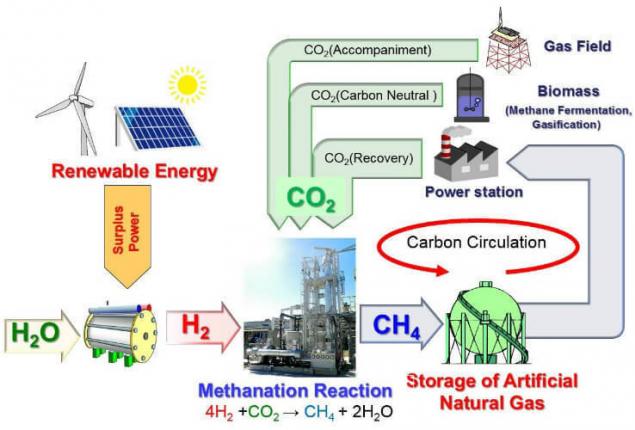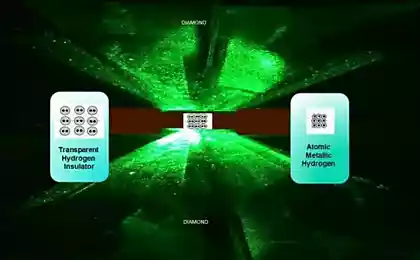432
Initiated development of technologies for large-scale production of methane from the air
The leaders of the Institute of industrial science (Institute of Industrial Science), University of Tokyo, National Institute of science and advanced technology (National Institute of Advanced Industrial Science and Technology, AIST), Hitachi Zosen Corp, JGC Corp and EX Research Institute Ltd 18 Nov 2016 adopted decision on organization of new joint research group "CCR (carbon capture & reuse) Study Group". This group will develop large-scale technologies with which it will be possible to obtain liquid and gaseous fuel, for example methane, using atmospheric carbon dioxide and hydrogen produced by electrolysis using energy from clean renewable sources.

First and foremost, the group will focus on research aimed at increasing the efficiency of use of energy from renewable energy sources, efficiency technologies, carbon dioxide from the atmosphere and its further use and development of new and more modern ways of producing hydrogen from water by electrolysis.
The basis of future technologies will be sufficiently well-known physical processes and chemical transformations that are implemented on a modern technological level. Carbon dioxide into the atmosphere when burning any type of fossil fuel, will react with hydrogen. This hydrogen is obtained by electrolysis, and the needed energy will come exclusively from non-polluting sources, mostly solar and wind power.

This technology is considered not only as a clean source of liquid and fossil fuel. Another function of such technology will be a saving in fuel of excess energy generated by solar and wind power plants in the hours of minimum consumption.
CCR group will deal with all existing types of renewable clean energy. In addition, will be explored and developed new efficient methods of producing hydrogen, carbon dioxide and turning it into fuel.

Working with all of researched and developed technologies will be conducted from two perspectives. The first position will be the development of compact, possibly mobile installations is not very high power, which can provide a gaseous methane needs a certain small group of people (a decentralized model). And the second direction is the development of large-scale production systems that will have high enough capacity and that can be included in a common energy network of the country (centralized model). published
Source: ecotechnology

First and foremost, the group will focus on research aimed at increasing the efficiency of use of energy from renewable energy sources, efficiency technologies, carbon dioxide from the atmosphere and its further use and development of new and more modern ways of producing hydrogen from water by electrolysis.
The basis of future technologies will be sufficiently well-known physical processes and chemical transformations that are implemented on a modern technological level. Carbon dioxide into the atmosphere when burning any type of fossil fuel, will react with hydrogen. This hydrogen is obtained by electrolysis, and the needed energy will come exclusively from non-polluting sources, mostly solar and wind power.

This technology is considered not only as a clean source of liquid and fossil fuel. Another function of such technology will be a saving in fuel of excess energy generated by solar and wind power plants in the hours of minimum consumption.
CCR group will deal with all existing types of renewable clean energy. In addition, will be explored and developed new efficient methods of producing hydrogen, carbon dioxide and turning it into fuel.

Working with all of researched and developed technologies will be conducted from two perspectives. The first position will be the development of compact, possibly mobile installations is not very high power, which can provide a gaseous methane needs a certain small group of people (a decentralized model). And the second direction is the development of large-scale production systems that will have high enough capacity and that can be included in a common energy network of the country (centralized model). published
Source: ecotechnology
Debuted 1000-strong Chinese-American competitor "Tesla"
Segway unveiled the new S1 gyrometer One with one wheel























